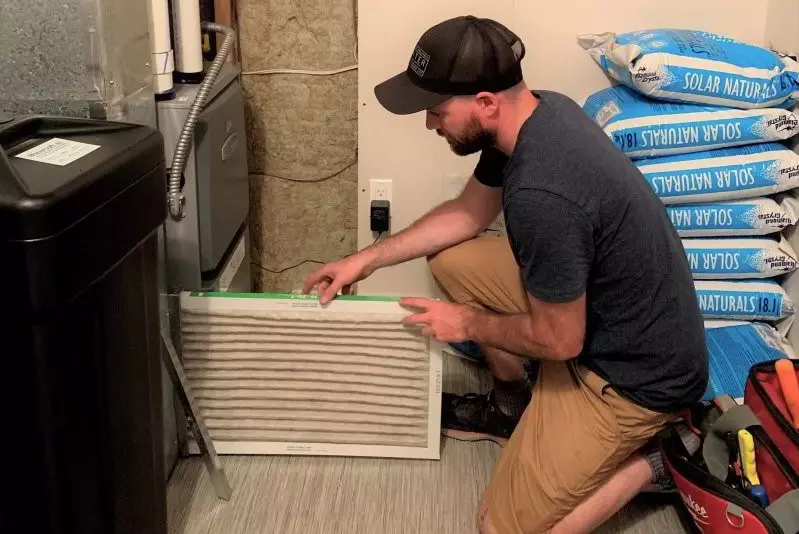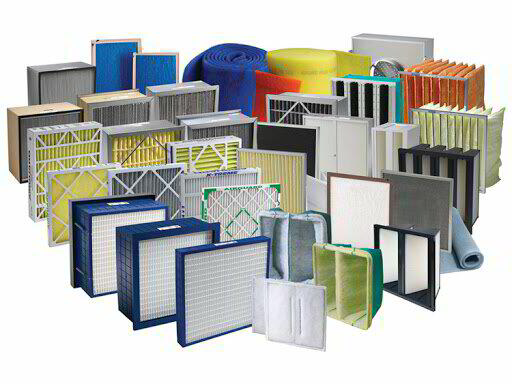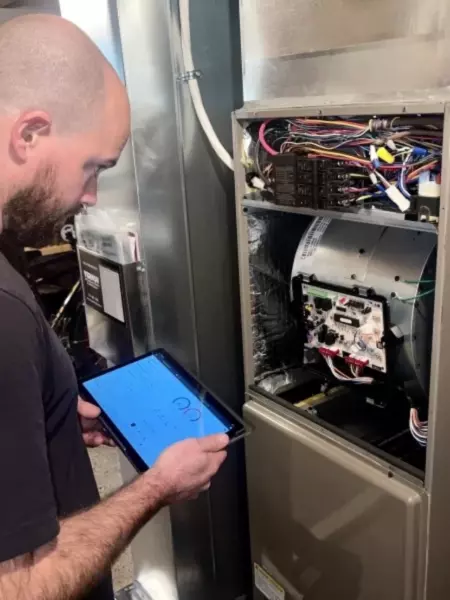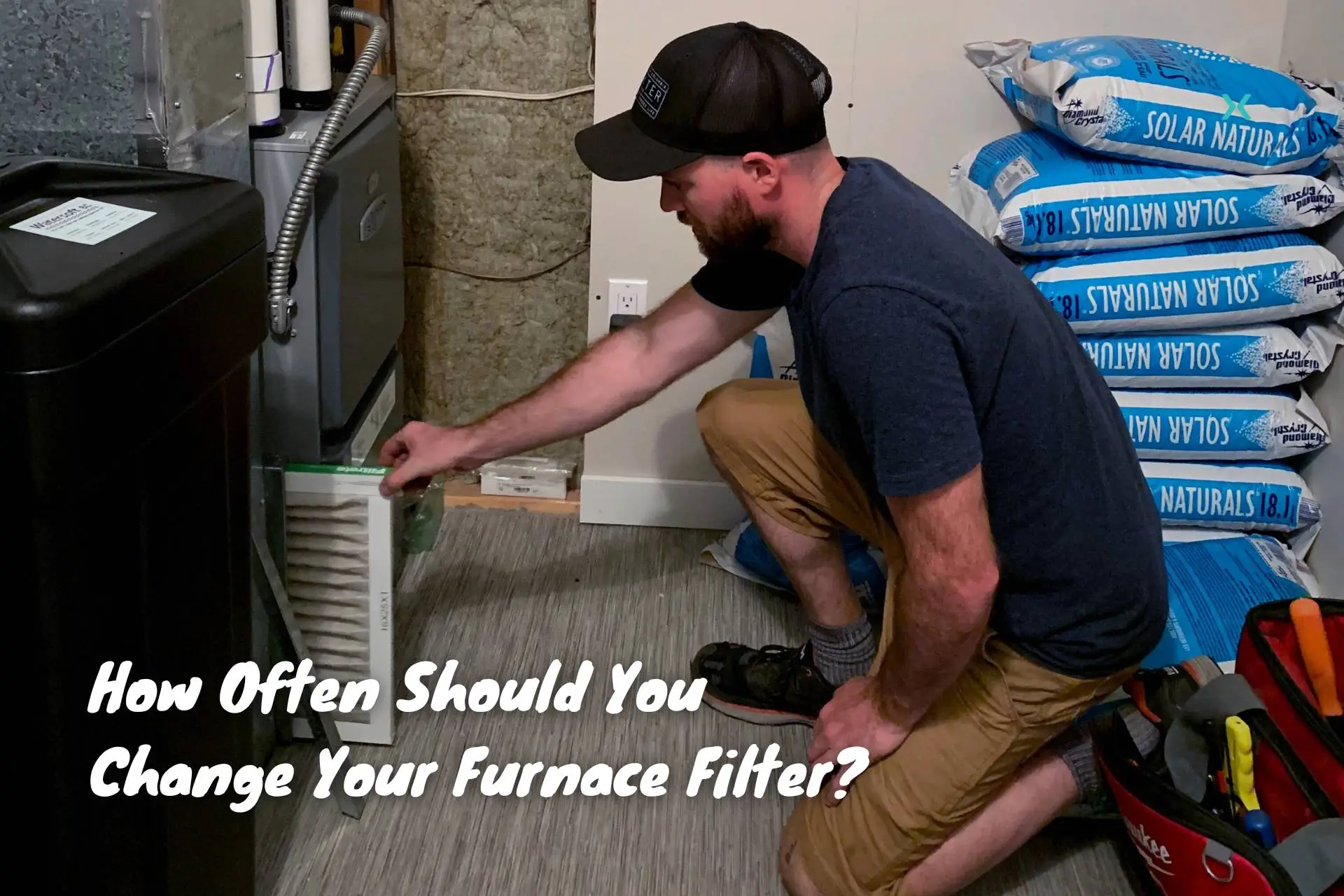Table of Contents
This Is Why You Need to Change Your Furnace Filter
Did you know that something as simple as changing your furnace filter can significantly impact your home’s air quality and the efficiency of your heating system? Neglecting this small but crucial task can lead to higher energy bills, reduced equipment life, and even health issues due to poor air quality.
Understanding the optimal frequency for replacing your furnace filter is essential yet often overlooked by homeowners. This article demystifies the process, offering clear guidelines and expert advice to ensure your home remains a sanctuary of clean air. Stay tuned to learn how to maintain your furnace’s peak performance and safeguard your living environment.
What Does a Furnace Filter Do?

Role in Indoor Air Quality
Furnace filters, the unsung heroes of home air quality, capture up to 90% of airborne particles, significantly enhancing respiratory health. Studies show that maintaining clean filters can halve the risk of respiratory issues, emphasizing their role beyond comfort to crucial health protection.
These filters continuously purify the air, ensuring homes are not just warm but also safe havens of breathability and well-being, making regular filter maintenance vital for a healthier living environment.
Impact on HVAC Efficiency
Clean furnace filters significantly enhance HVAC efficiency, offering up to 15% energy savings and extending equipment lifespan by reducing strain. This lowers energy bills, improves home comfort, and lessens environmental impact.
Regular maintenance ensures balanced airflow, amplifying system longevity and promoting sustainable living. It’s a holistic approach beyond immediate savings, embodying a commitment to cost-effective, environmentally responsible comfort and well-being.
Factors Affecting Filter Change Frequency

Filter Thickness and Types
Filter thickness, whether 1″, 2″, 4″, or 5″, significantly impacts maintenance frequency.
Thinner 1″ air filters require more frequent changes, approximately every 1-3 months, as they quickly accumulate debris. Competitors align with this, emphasizing regular replacements for optimal performance.
In contrast, thicker air filters, like 4″ or 5″, boast a longer lifespan, needing replacement every 6-12 months. However, competitors might overlook the nuanced selection process.
Consider household factors—pet dander, allergies, or other airborne contaminants. For pet owners or allergy-prone individuals, a thicker filter might be optimal. Tailoring thickness to specific needs ensures convenience and tailored efficiency in maintaining superior indoor air quality.
MERV Rating
MERV rating (Minimum Efficiency Reporting Value) is a key filter metric that dictates the furnace’s filter efficiency in trapping particles. Competitors concur that higher MERV ratings (e.g., 13-16) offer superior filtration but emphasize potential strain on HVAC systems.
When the old filter is blocked, it becomes harder to draw air through the furnace filter, leading to a breakdown in the blower motor and fan or, even worse, a crack in the heat exchanger. This happens because less return air passes across the combustion chamber, overheating it.
Balancing efficiency and system compatibility is crucial. I propose a nuanced approach unlike competitors, who generally recommend MERV 8-12.
A higher MERV is beneficial for allergy-prone individuals or those seeking advanced filtration. However, homeowners must align the rating with HVAC specifications to prevent strain.
It’s a delicate equilibrium—maximizing filtration without compromising system functionality. Consulting HVAC professionals and considering specific health needs aid in selecting the ideal MERV rating for personalized efficiency.
Home Environment
The lifespan of furnace filters is intricately linked to household dynamics. For pet owners battling heightened dander or in homes with elevated dust levels, new filters may require more frequent changes than competitors suggest—perhaps every 1-2 months.
Additionally, if the HVAC system is frequently in use, regular inspections become imperative. Beyond competitors’ recommendations, homes with high allergen levels benefit from specialized allergen-reducing filters (HEPA air filters) providing an extra layer of defence.
Proactive measures like using air purifiers and grooming pets regularly offer supplemental relief. Tailoring filter replacement to specific environmental demands ensures optimal performance, addressing the unique challenges posed by diverse households.
Signs It’s Time to Replace Your Furnace Filter
Elevated energy bills serve as a red flag, signaling potential issues with furnace filters. When clogged filters impede airflow, forcing the HVAC system to work harder, resulting in increased energy consumption.
Competitors often mention this, but homeowners should note a decline in indoor air quality. If residents experience exacerbated allergies, respiratory problems, or persistent dust, it may indicate filter inefficiency.
Visual inspection of the furnace filters is paramount; if they appear dirty or discolored, immediately replace them with a new filter or clean filter.
Beyond these insights, watch for uneven heating or cooling—a sign of restricting airflow. Additionally, be attuned to peculiar sounds like whistling or rattling in both the supply vent and return air vent, indicating an obstruction.
Frequent sneezing or discomfort may signal the need for enhanced filtration for homes with high allergen levels, such as when pets shed fur and other contaminants. Being proactive in monitoring these signs ensures optimal HVAC performance.
Regularly perform tune-ups to your heating and cooling system by inspecting the furnace filters, especially in homes with pets or prevalent allergens and airborne particles.
Conduct routine HVAC system checks to prevent strain. Homeowners can ensure a healthier, energy-efficient home environment by heeding these indicators and going beyond competitors’ recommendations while avoiding potential system breakdowns and costly repairs.
Seasonal Considerations
Winter Months vs. Summer Months
Due to distinct HVAC system usage patterns, furnace filter change frequency varies between colder and warmer months.
In colder months, the heating system operates more frequently, demanding increased airflow and using more energy. As a result, furnace filters trap dust and debris faster, necessitating more frequent replacements, typically every 1-3 months.
In contrast, more air conditioning units are in use during warmer months, but the demand is generally lower, extending the filter lifespan to 2-6 months. Homeowners can adjust their maintenance schedules by aligning filter changes with seasonal transitions based on how often the furnace or the air conditioner runs per day.
As colder months approach, increase vigilance and check furnace filters monthly to ensure optimal heating efficiency. In warmer months, a bi-monthly or quarterly inspection suffices. This adaptive approach optimizes filter performance, promotes energy efficiency, and safeguards HVAC equipment yearly.
Changing your furnace filter based on seasonal demands ensures a well-maintained heating and cooling system, providing comfort and longevity irrespective of the weather.
The Risks of Not Changing Filters Regularly

Infrequent furnace filter changes pose multiple risks beyond the official manufacturer’s recommendations.
Neglecting regular replacements can drastically diminish the lifespan of HVAC systems. Clogged furnace filters force the system to work harder, leading to increased wear and tear and more dust and small particles getting pushed around the filter, ultimately shortening its lifespan.
Additionally, compromised indoor air quality becomes a silent hazard, especially for those with respiratory issues or allergies. Stagnant indoor air, laden with pollutants due to dirty filters, can exacerbate health problems, triggering asthma attacks or respiratory discomfort.
Beyond the potential health risks, the financial implications are substantial. Competitors often mention increased energy bills, but infrequent filter changes heighten the likelihood of costly repairs or, at worst, a full-on furnace system changeout.
Filters are the first line of defense against system malfunctions, preventing dirt and debris from damaging vital components. Ignoring this maintenance aspect can result in avoidable breakdowns and expensive service calls.
Homeowners must recognize the comprehensive impact—impaired health, diminished system efficiency, and augmented repair expenses—emphasizing the critical importance of regular, proactive filter changes for a harmonious and cost-effective home environment.
Beyond the Basics
Consider reusable filters to reduce environmental impact; they can be cleaned and reused, reducing waste.
✅ DIY TIP: Use a nozzle attachment vacuum to gently clean reusable filters by removing pet dander, hair, and other debris.
Opt for electrostatic filters—advanced technology that attracts particles like a magnet. They maintain efficiency longer than traditional filters. Explore HEPA filters for superior allergen removal, but be mindful of potential strain on HVAC equipment.
Remember, pleated filters or thicker filters aren’t always better; consult your HVAC system specifications for compatibility.
Conclusion

Maintaining an efficient HVAC system requires regular furnace filter changes to prevent clogs that can increase energy bills, shorten equipment lifespan, and degrade air quality. Recognizing signs like rising costs, worsening allergies, or visible dirt on filters is crucial.
The article also advises adjusting filter replacement frequency with seasonal changes, considering eco-friendly filters, and understanding filter sizes and MERV ratings for optimal home environment management. Proactive maintenance, including routine changes every 3 months, is essential for peak performance.
Phyxter Home Services brings a wealth of expertise and experience to HVAC maintenance, offering valuable insights to homeowners. Our commitment to delivering high-quality information and services ensures your home remains a comfortable, energy-efficient space.
We invite you to explore more insightful AC articles and consider Phyxter Home Services for your HVAC needs. Act now to enhance your home’s air quality and efficiency with our professional guidance and support.

